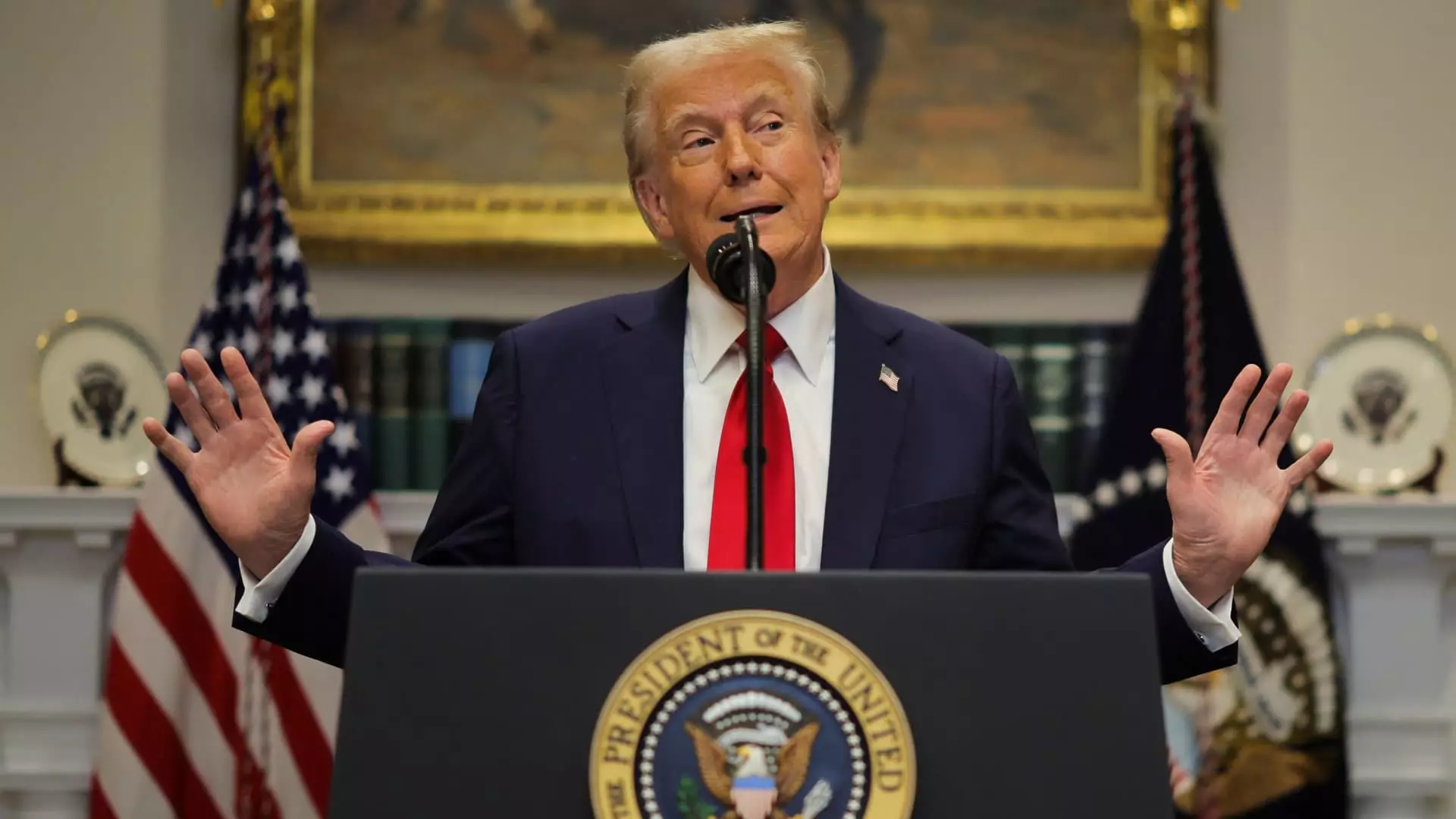The trade landscape between the United States and China has witnessed a series of tumultuous shifts, particularly under the Trump administration. As tariffs are repeatedly proposed and the rhetoric around trade escalates, understanding the multifaceted relationship between these two economic giants is crucial. Recently, President Donald Trump’s discussions regarding a potential 10% tariff on Chinese goods have added another layer to an already intricate economic dialogue. This article delves into the implications of such tariffs, the response from China, and the broader economic repercussions.
Trump’s rationale for the proposed tariff centers heavily on issues surrounding the synthetic opioid fentanyl, which has been linked to a tragic rise in overdose deaths in the United States. The president pointed out that a significant portion of fentanyl and its precursors are produced in China, leading to its illicit trafficking into the U.S. through Mexico and Canada. This geopolitical concern has become a point of negotiation, with Washington and Beijing agreeing to cooperate on reducing the flow of these dangerous substances. However, while fentanyl serves as a backdrop for the proposed tariffs, it raises questions about whether economic penalties are an effective means of addressing health crises.
Following Trump’s announcement, Chinese officials have emphasized the importance of cooperation over confrontation. President Xi Jinping’s dialogue with Trump underscored a desire for mutually beneficial economic ties. China’s Vice Premier, Ding Xuexiang, who addressed the World Economic Forum in Davos, articulated a cautionary stance by stating that “no winners” emerge from a trade war. His comments call for global solidarity towards economic globalization, suggesting that trade wars ultimately disrupt not only bilateral relations but also the interconnected global economy.
In the financial markets, the initial reaction to the tariff discussions saw the offshore Chinese yuan strengthen momentarily before declining. This volatility reflects investor uncertainty regarding future trade dynamics and highlights how tariffs could ripple through international markets. Significantly, major Chinese media outlets have largely avoided reporting the proposed tariff, perhaps indicating a strategic communication approach to manage national sentiment and maintain economic stability in uncertain times.
The current trade data paints a complex picture of U.S.-China relations. Despite the ongoing tensions, the data show that China’s imports from the U.S. decreased by 0.1% last year, while exports to the U.S. experienced a modest growth of 4.9%. This dynamic has resulted in a heightened trade surplus for China. The figures suggest that while the U.S. continues to wrangle with trade deficits, reliance on Chinese imports remains a reality, complicating any straightforward responses to tariff impositions.
Economic analysts, including those at the Peterson Institute for International Economics, warn that an additional 10% tariff on Chinese goods could contract the U.S. GDP by $55 billion over four years, and would similarly impact China’s economy. This analysis underlines the reciprocal nature of tariff impacts, denoting that while such policies may be intended to reshape trade dynamics, they can equally affect the U.S. economy adversely.
In addition to the proposed China tariffs, President Trump has indicated a willingness to impose significant tariffs on both Mexico and Canada, citing immigration issues as a primary concern. The notion of a 25% tariff on North American trade partners heightens the sense of uncertainty among investors and businesses alike. Trump has previously floated the idea of much steeper tariffs, reaching upward of 60%, which further complicates an already sensitive trading environment.
As the potential for new tariffs looms, the overarching question remains: are such measures a viable solution to the complex issues underlying U.S.-China relations? The intertwining of health concerns, economic stability, and political rhetoric creates a challenging landscape. While the pursuit of better trade terms is universal, the approach of leveraging tariffs as a bargaining tool raises significant implications that extend beyond border walls and into the everyday lives of citizens in both nations. Ultimately, a focus on diplomacy and cooperation may yield better long-term results than a cycle of retaliatory tariffs, but whether this path will be embraced remains to be seen amidst the current political climate.


Leave a Reply